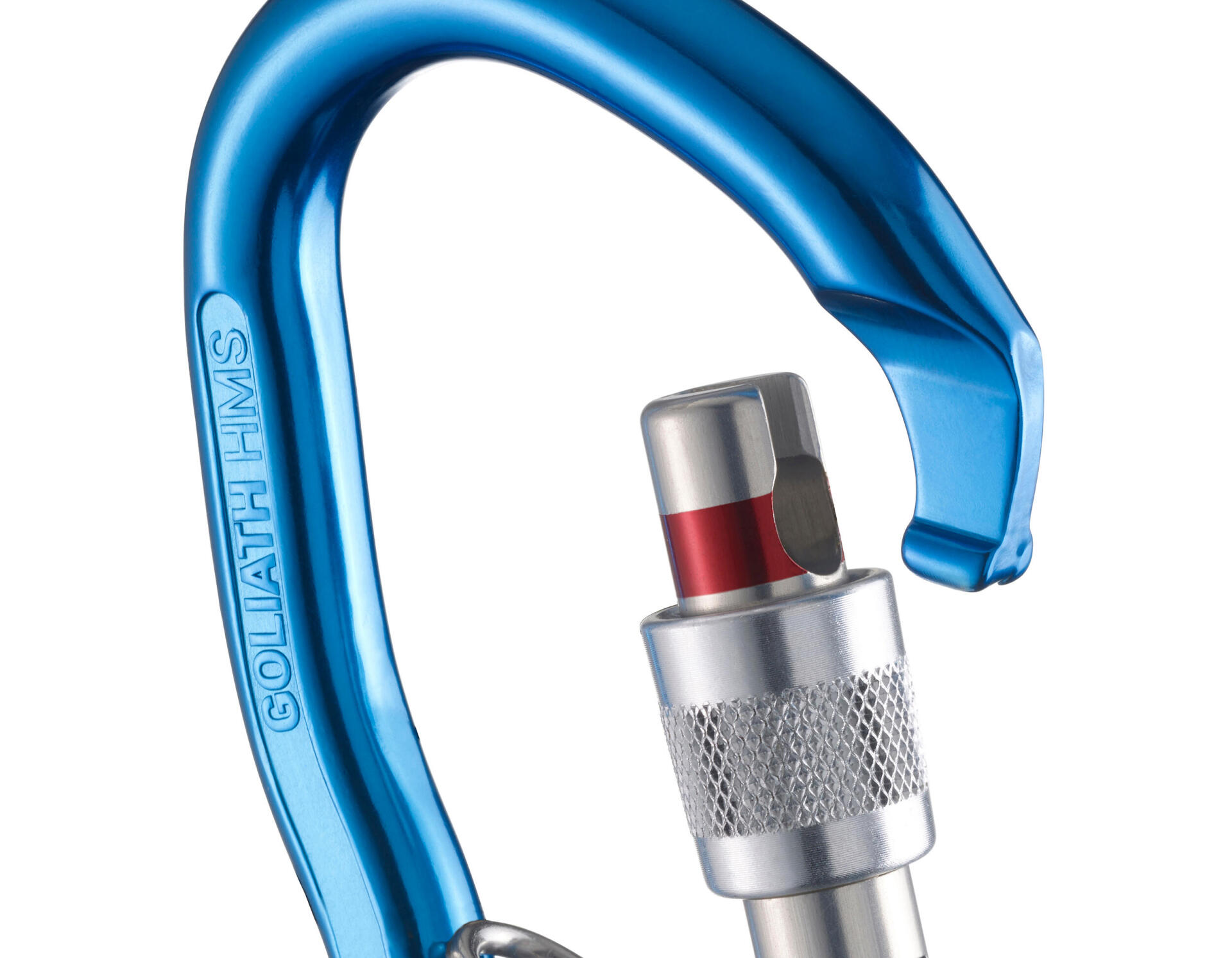For indoor climbing or single-pitch sport climbing
Indoors, your focus will be on choosing your belay carabiner: the one that connects your harness, your descender and the rope used for belaying.

Whether you are into indoor climbing or love a bit of big wall, multi-pitch or mountaineering. A carabiner is something you should be able to rely on for safe climbing.
First of all, you should know that there are two types of carabiners: non-locking carabiners (simple carabiners that do not lock) and locking carabiners (such as screwgate carabiners)... each with their own uses!

Indoors, your focus will be on choosing your belay carabiner: the one that connects your harness, your descender and the rope used for belaying.

Classic locking mechanism
A belay carabiner has a locking mechanism to protect you from any risk of the carabiner opening in the event of an impact.

Automatic locking
Auto-lock carabiners are heavier than classic screwgate carabiners but are very user-friendly. The spring-loaded mechanism closes by itself. This also makes this type of carabiner easy to operate with one hand.
Still not sure? we asked Jean-Charles, climbing product manager, to give us his recommendations.
For beginners, safety is your priority.
If you are new to climbing, I recommend a pear-shaped auto-lock carabiner with BLC, like the Goliath HMS auto:
For experienced climbers, choose a low weight.
If you are more experienced and are looking for a smooth, lightweight and compact carabiner, I recommend the spider screwgate HMS BLC:
Are you a lead climber? In addition to the carabiner for your belay system, you will also need a second carabiner for your lanyard: on one side the lanyard is connected to your harness and on the other you will need a carabiner to attach it to the rock.
Once you have set up your station, you will then need a third carabiner to attach the rope to your harness.
Which shape to choose?
Carabiners have different profiles: some are pear-shaped (called HMS* carabiners) others are D-shaped.
HMS carabiners have a more ergonomic shape than D-shaped ones, flaring out towards the top of the carabiner, giving a wide opening that can be used for belaying with a Munter hitch.
For anchoring, we recommend D-shaped carabiners
This is the standard and most common shape. They are less expensive and deliver uniform strength over the entire carabiner, making them perfectly suited to this specific use.
*HMS = Halb Mastwurf Sicherung = Munter hitch belay, in German.

In addition to the carabiners mentioned above, you will need additional carabiners to triangulate your anchor and to abseil back down.
How many you need will depend on your technique and the gear along the route.
To do this, use locking carabiners.
For clipping anchors, D-shape carabiners are sufficient. For belaying off an anchor, you will be more comfortable if you choose an HMS shape.

You will also need simple, non-locking carabiners as you move along. You can use them with slings or cams on spikes and horns.
Locking mechanism, check, carabiner shape, check. But some carabiners have even more features! What are they for? Do you need them or not? Read on for our explanations to help you make an informed decision.

"Secure" locking indicator
For maximum safety, some models have a red band that lets you see whether the gate is screwed shut at a glance. Double check, ready? Climb!

Blc or directional carabiner
A carabiner is strongest in its longitudinal direction. But during an ascent, the carabiner could turn sideways. Some carabiners therefore have a BLC system (Belay Loop Controller). This is a bar that restricts (without inhibiting) the movement of the carabiner. It keeps it in the right position, i.e., correctly aligned in the direction of the force. Safety guaranteed!

Spider system
Developed by Simond, the Spider system ensures easy clipping in all situations. Move the male part of the Keylock system from the nose of the carabiner towards its gate to release the mechanism. A smooth and snag-free system

Carabiners are safety devices. Certain pieces of information must therefore be displayed.
CE indicates that the product meets the requirements of the European standard.
UIAA means that the carabiner meets the requirements of the International Climbing and Mountaineering Federation
<-> is the strength rating of the carabiner's major axis
The vertical arrow is the minor-axis strength
And the open carabiner indicates the gate-open strength (the gate being the part of the carabiner that moves when opened and closed)
These numbers are the carabiner's maximum strength ratings.
Strength ratings are given in kilonewton (kN). 1kN = 100 kg.
You will also find the name of the model and sometimes letters indicating the complementary systems that your carabiner has.
That's it, you are almost an expert in carabiners.
Do you have any other questions? Please feel free to ask us. Do you have a favourite carabiner? Tell us why in the comments.
And remember, before you set off, to always check that your carabiner is closed and in the right position. Happy climbing!
Did you know? All of our carabiners are made in our factory in Chamonix, France.